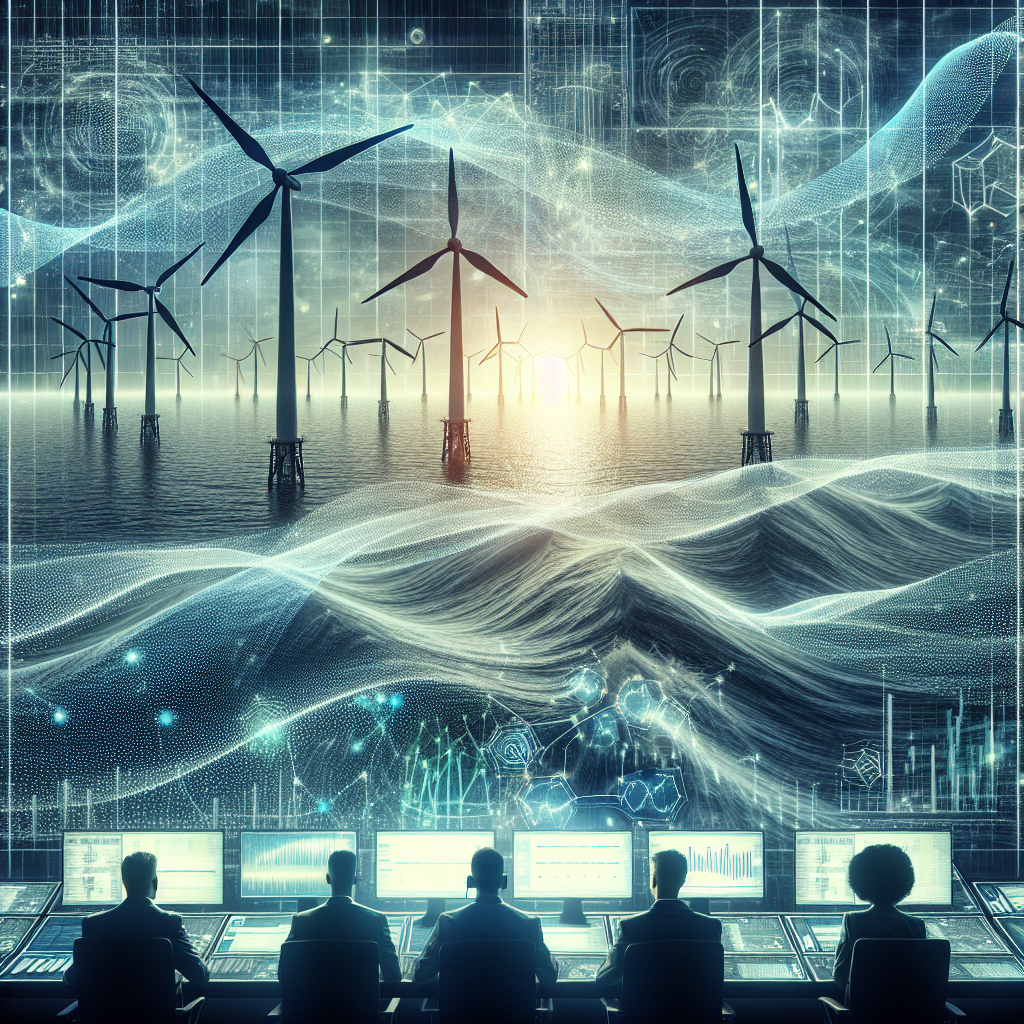The Impact of AI on Offshore Wind Energy Development
Offshore wind energy is a rapidly growing sector in the renewable energy industry, with the potential to play a significant role in reducing carbon emissions and combating climate change. As technology continues to advance, artificial intelligence (AI) is increasingly being used to improve the efficiency, reliability, and cost-effectiveness of offshore wind energy development. In this article, we will explore the impact of AI on offshore wind energy development and its potential benefits.
1. Optimizing Wind Farm Layouts
One of the key challenges in offshore wind energy development is determining the most efficient layout for wind turbines in a wind farm. AI algorithms can analyze vast amounts of data, including wind speed, direction, and turbulence, as well as seabed topography and environmental conditions, to optimize the placement of turbines for maximum energy production. By using AI to design wind farm layouts, developers can increase energy output, reduce costs, and minimize environmental impacts.
2. Predictive Maintenance
Maintaining offshore wind turbines is a costly and time-consuming process, as technicians often have to travel long distances by boat to perform inspections and repairs. AI-powered predictive maintenance systems can help to identify potential issues before they occur, allowing for proactive maintenance and reducing downtime. By analyzing data from sensors and monitoring equipment, AI algorithms can detect anomalies in turbine performance and predict when maintenance is needed, saving time and money for developers.
3. Autonomous Operations
AI technology is also being used to automate and optimize the operation of offshore wind farms. By integrating AI algorithms with control systems, developers can improve the efficiency of energy production, reduce operational costs, and enhance the reliability of wind turbines. Autonomous operations can also help to optimize power output by adjusting turbine settings in real-time based on changing wind conditions, further increasing the overall efficiency of offshore wind energy development.
4. Environmental Monitoring
Offshore wind farms can have a range of environmental impacts, including noise pollution, disturbance to marine life, and changes to seabed habitats. AI technology can be used to monitor and mitigate these impacts by analyzing data from sensors, cameras, and acoustic monitoring devices. By using AI to track and assess environmental changes, developers can make informed decisions to minimize their impact on the surrounding ecosystem and comply with regulatory requirements.
5. Cost Reduction
AI technology has the potential to significantly reduce the costs of offshore wind energy development by optimizing processes, improving efficiency, and increasing energy output. By using AI to design wind farm layouts, predict maintenance needs, automate operations, and monitor environmental impacts, developers can save time and money throughout the project lifecycle. As AI technology continues to advance, the cost-effectiveness of offshore wind energy development is expected to further improve, making renewable energy more competitive with traditional fossil fuels.
FAQs
Q: How does AI optimize wind farm layouts?
A: AI algorithms analyze data on wind speed, direction, turbulence, seabed topography, and environmental conditions to determine the most efficient placement of wind turbines in a wind farm for maximum energy production.
Q: How does AI predict maintenance needs for offshore wind turbines?
A: AI-powered predictive maintenance systems analyze data from sensors and monitoring equipment to detect anomalies in turbine performance and predict when maintenance is needed, allowing for proactive maintenance and reducing downtime.
Q: How does AI automate and optimize the operation of offshore wind farms?
A: By integrating AI algorithms with control systems, developers can improve the efficiency of energy production, reduce operational costs, and enhance the reliability of wind turbines, leading to autonomous operations and increased overall efficiency.
Q: How does AI monitor and mitigate environmental impacts of offshore wind farms?
A: AI technology analyzes data from sensors, cameras, and acoustic monitoring devices to track and assess environmental changes, allowing developers to make informed decisions to minimize their impact on the surrounding ecosystem and comply with regulatory requirements.
In conclusion, AI technology is revolutionizing offshore wind energy development by optimizing wind farm layouts, predicting maintenance needs, automating operations, monitoring environmental impacts, and reducing costs. As the renewable energy industry continues to grow, AI will play an increasingly important role in driving innovation and sustainability in offshore wind energy development. By harnessing the power of AI, developers can unlock the full potential of offshore wind energy and help to build a cleaner, greener future for generations to come.

